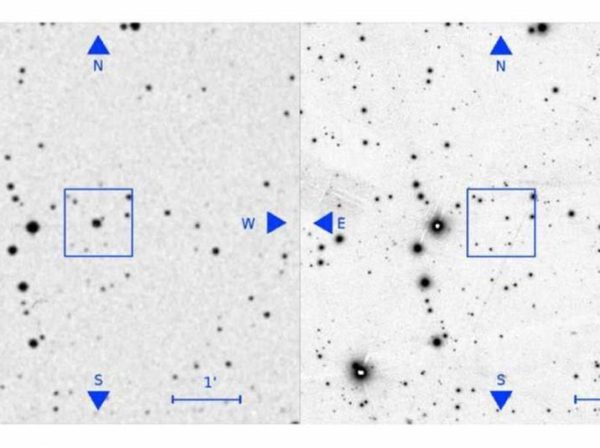
A team of astronomers has been comparing sky surveys done decades apart and keeps finding examples of stars that have seemingly disappeared.
Press reports have naturally jumped on the findings with exotic theories, such as aliens enclosing the stars with Dyson spheres, but the scientific paper, while mentioning such possibilities, concentrates on the phenomenon of “red transient” stars that might account for the missing objects.
Another possibility are “flare stars,” which experience dramatic eruptions. Since about 100 of the missing stars were only seen once, and not in other images before or after, they may be good candidates for flare stars caught in the act. But that doesn’t explain all of the vanishing objects.
Another possibility might be extreme versions of variable stars that pulsate in brightness, like the famous Mira in the constellation Cetus the whale, (also known as Omicron Ceti, and “Mira the Wonderful” for its widely variable brightness). Mira goes through a difference in brightness from 2nd magnitude (easily visible to the naked eye, even in the city) to 10th magnitude, which would need binoculars to detect, over the period of about a year. Again, perhaps some of the vanishing stars are variables that happened to be caught near their maximum in one sky survey, and not in another.
We’re reminded of a similar controversy that has puzzled astronomers for centuries: Numerous ancient sources referred to Sirius, the brightest star in the sky, as a “red” star, when today it is a bright white with no hint of red at all.
An exotic 19th century theory attributed this to the ancients not seeing color the same way we do, but this was based largely on weird color descriptions in Homer (the “wine-dark sea” for example); and traditionally, Homer had to make a living as a storyteller because he was blind (it is now thought that many bards contributed to the “Homeric” epics, but it is certainly plausible that a famous one of these bards had terrible eyesight). This controversy goes back to 1760, well before the discovery of the white dwarf companion Sirius B, which could provide a physical explanation if it was a red giant until medieval times. Astrophysicists have generally rejected the notion that Sirius B could have changed so rapidly, but this new case of vanishing stars raises the question anew.






